Moderately strong M4.7 solar flare erupts from geoeffective AR 2860
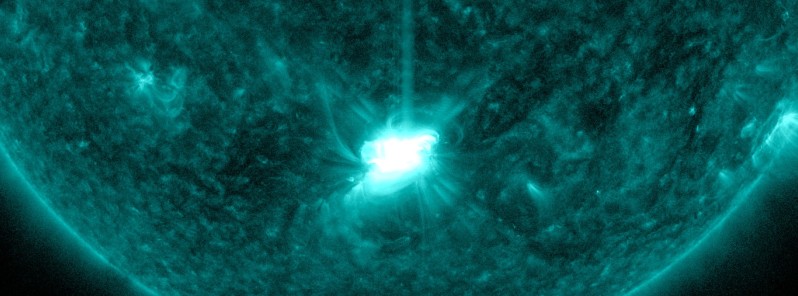
A moderately strong solar flare measuring M4.7 at its peak erupted from geoeffective Active Region 2860 at 06:15 UTC on August 28, 2021. The event started at 05:39 and ended at 06:23 UTC.
The flare event follows increased solar activity with numerous c-class flares over the past 2 days and a C3 flare from AR2859 with an associated partial-halo coronal mass ejection (CME) on August 26. The impact from this event is expected on August 29, possibly causing G1 – Minor geomagnetic storms.
The eruption also caused a massive 'solar tsunami' — a wave of hot plasma and magnetism. "Based on the time it took to reach the next sunspot, halfway around the Sun, the tsunami was traveling faster than 177 000 km/h (110 000 mph)," said Dr. Tony Phillips of SpaceWeather.com.
Today's m-class flare was associated with a Type II radio emission (estimated velocity 276 km/s) at 06:04 UTC. Type II emissions occur in association with eruptions on the sun and typically indicate a coronal mass ejection is associated with a flare event.
Additionally, a Type IV Radio Emission was registered at 06:15 UTC, indicating a major eruption on the Sun. Type IV emissions are typically associated with strong CMEs and solar radiation storms.
Region 2860 has Beta-Gamma magnetic configuration and is capable of producing more moderate to strong eruptions on the Sun.
Its current location favors Earth-directed CMEs.
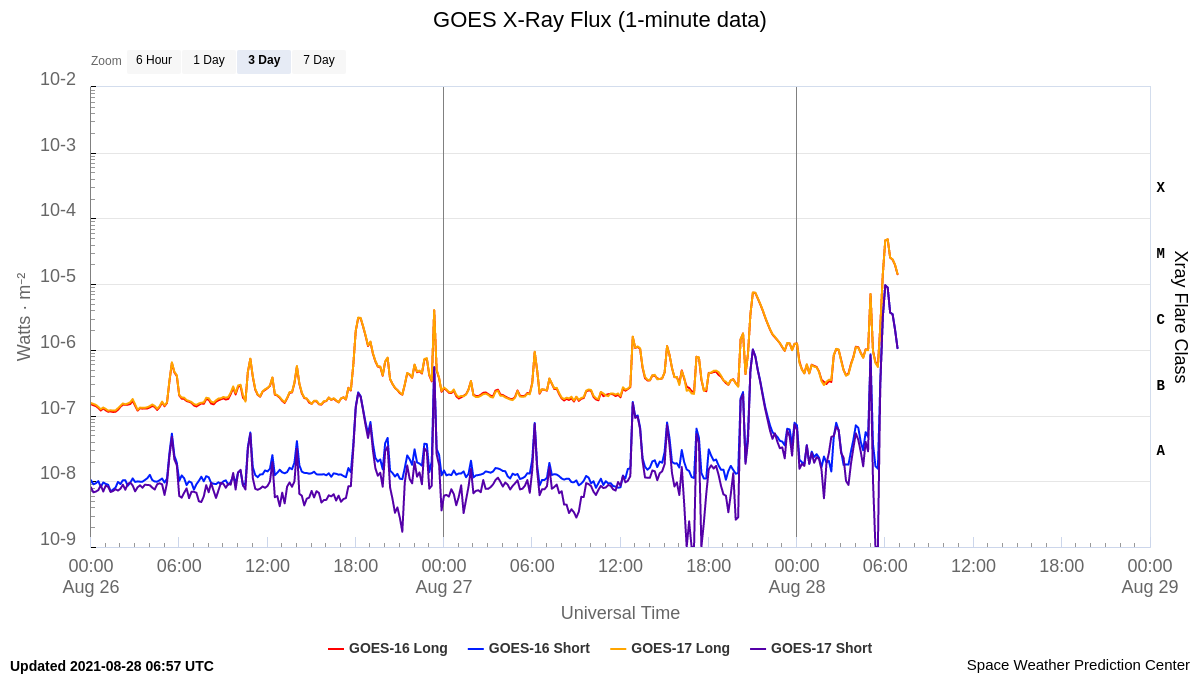
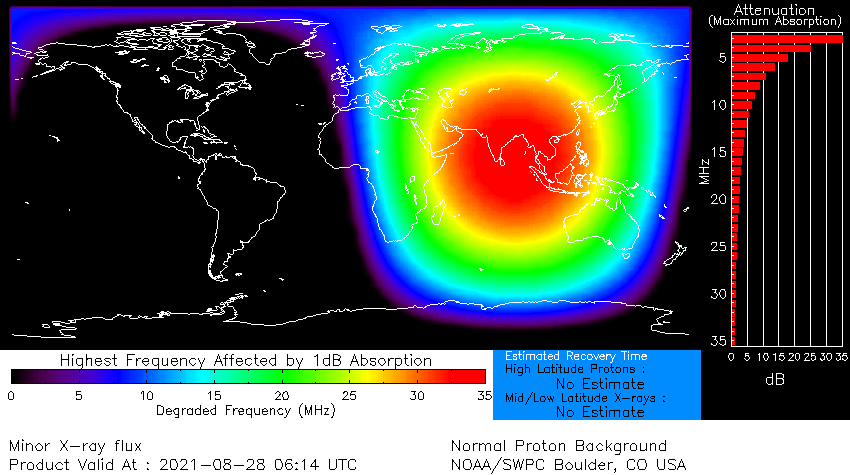
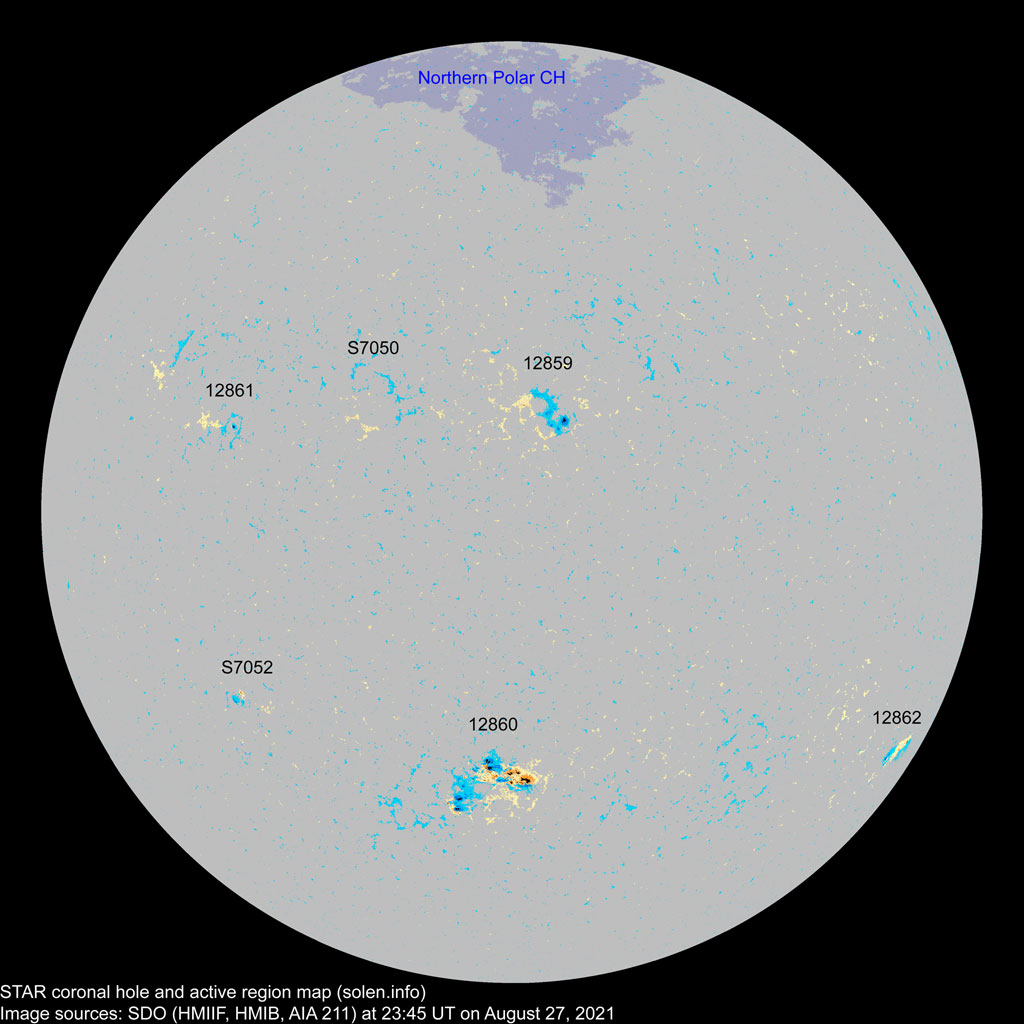
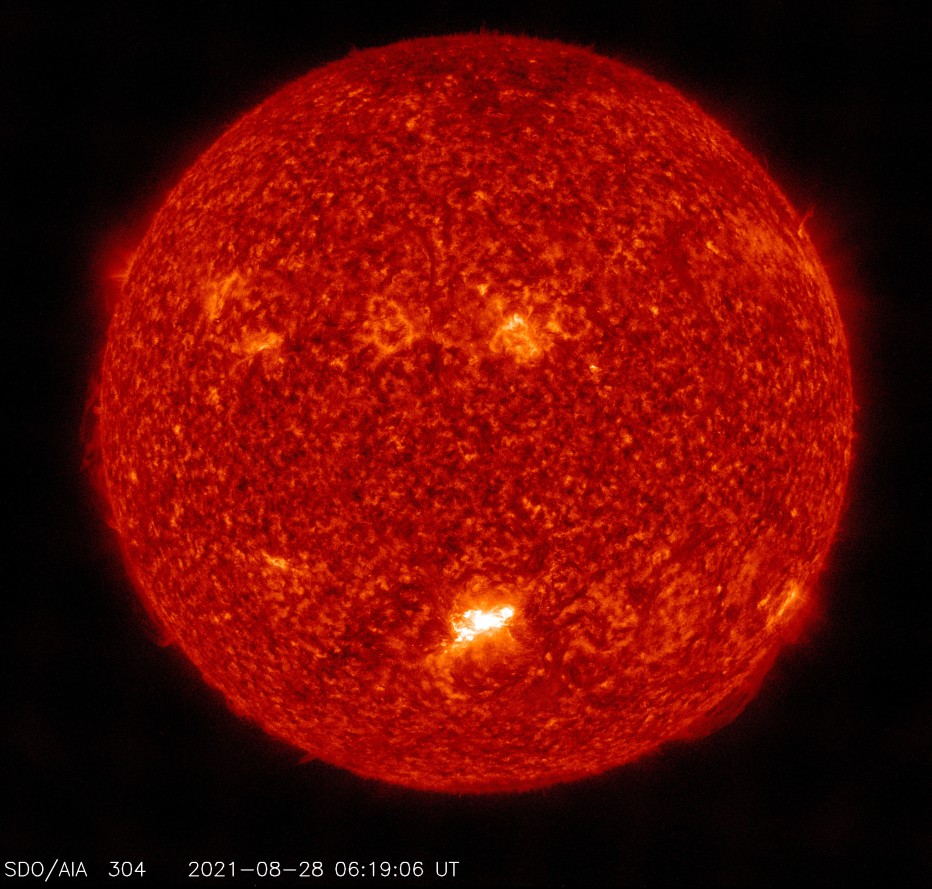
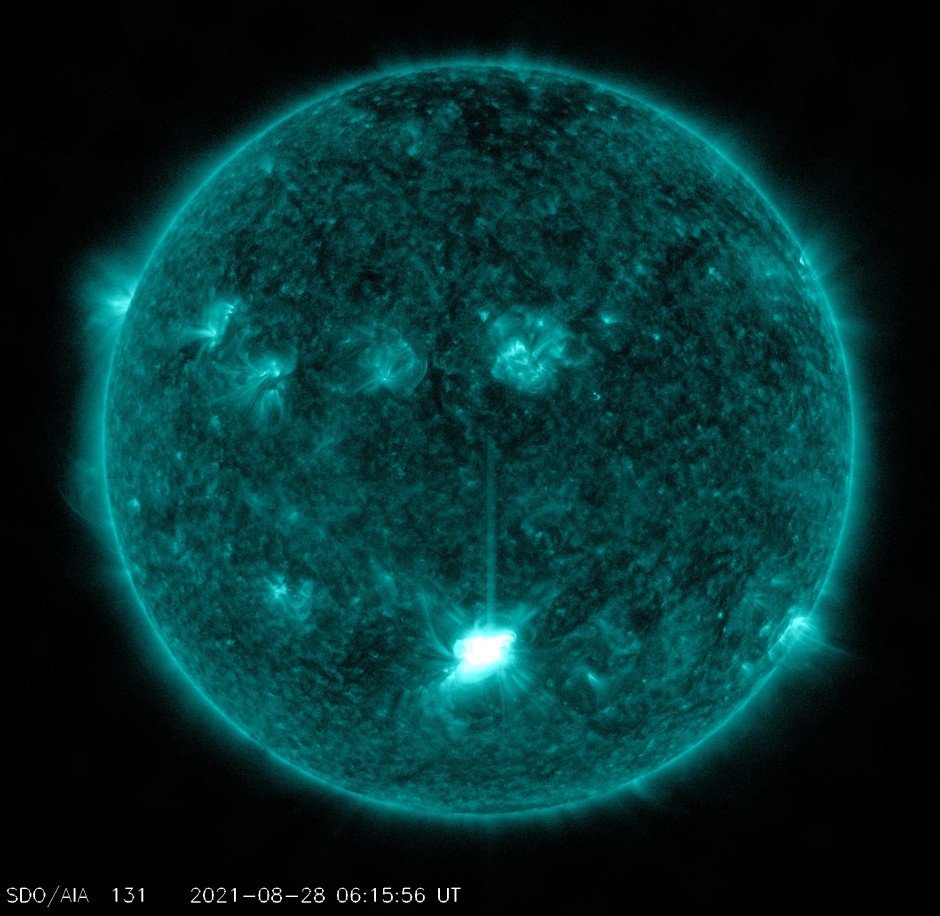
The solar wind environment was enhanced in 24 hours to 00:30 UTC today due to the passage of the August 23 CME, which was observed beginning at around 00:30 UTC on August 27.
Following the arrival of the aforementioned CME, wind speeds increased to around 400 km/s, total field increased to around 16 nT, and Bz was sustained southward at around -15 nT.
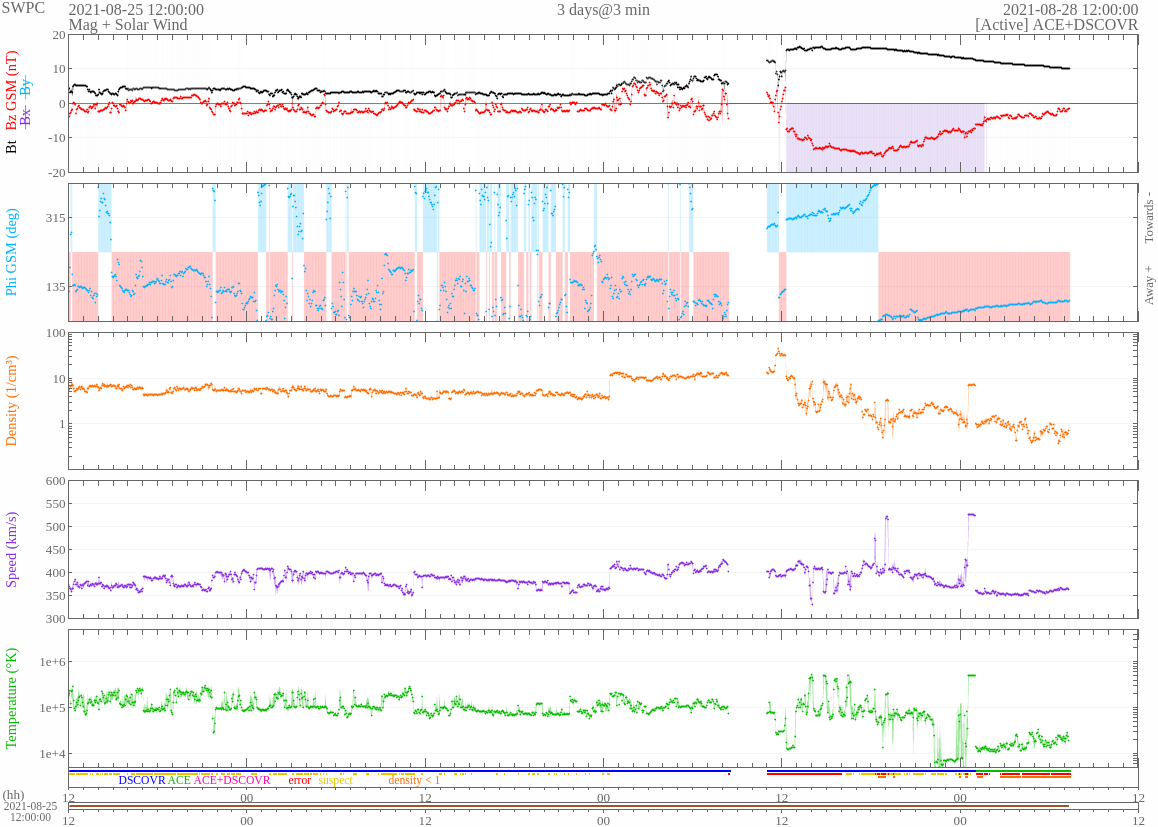
Earth's magnetic field was at quiet to active levels (Geomagnetic K-index <5) due primarily to the passage of the August 23 CME until 02:16 UTC on August 28 when the Geomagnetic K-Index of 5 — G1 Minor geomagnetic storm — was registered.
The levels quickly returned back to quiet.
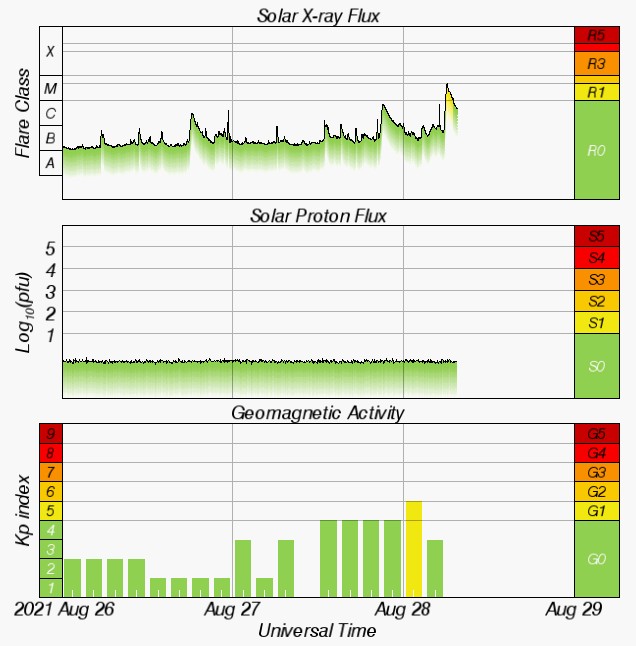
References:
Forecast Discussion Issued: 2021 Aug 28 0030 UTC Prepared by the U.S. Dept. of Commerce, NOAA, Space Weather Prediction Center
Forecast Discussion Issued: 2021 Aug 27 1230 UTC Prepared by the U.S. Dept. of Commerce, NOAA, Space Weather Prediction Center
Solar Tsunami and CME – SpaceWeather.com – August 28, 2021
Featured image: M4.7 solar flare on August 28, 2021. Credit: NASA SDO/AIA 131

Is it just coincidence the hurricane and storm activity times perfectly to this….or not at all related?